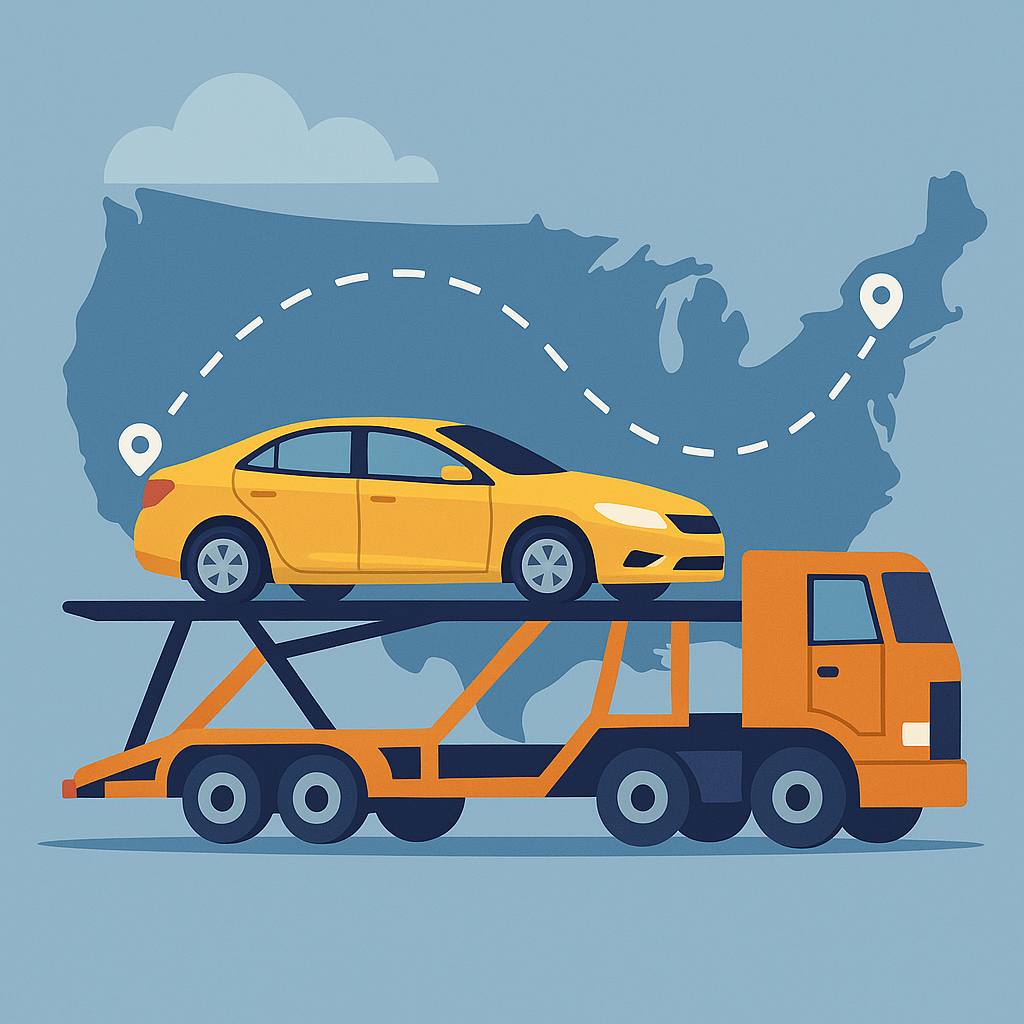Moving across state lines puts a lot on your plate. Boxes, keys, leases, job start dates. In the middle of all that, there is the vehicle. If you are thinking, “I’m shipping my car to another state and I don’t want surprises,” you are not alone. I haul cars for a living, and the pattern is familiar: pick a service type, prep the vehicle, lock a pickup window, and let the miles pass without drama. Costs change with distance, season, and trailer type, but the routine stays steady when both sides do their part. If you want a realistic price frame before you call anyone, this page helps set expectations by route and service style: car shipping costs.
Two trailer choices cover most moves. Open carriers run the widest network and keep rates lower. Enclosed carriers add protection from weather and road grit, and the price goes up. I usually suggest open for daily drivers and enclosed for luxury, classics, restorations, or anything with fresh paint. Beyond that, your pickup and drop-off locations matter. Wide streets and easy access cut time. Tight alleys and heavy traffic add delays. None of this is complicated once you see it laid out step by step.
Step-by-step car shipping guide
Here is the sequence I lean on for state-to-state work. It is not fancy, but it is steady.
- Check licensing and coverage. Look up the company’s authority and insurance. Recent feedback that mentions honest timing updates and condition on delivery counts more than star art.
- Pick open or enclosed. Daily driver on a budget usually rides open. High-value vehicles or show cars go enclosed. If you want a longer walk-through that covers prep from start to finish, this guide is handy: how to ship a car.
- Get quotes in writing. You want a pickup window, a delivery range, what the rate includes, and a direct number for dispatch or the driver.
- Book ahead. Summer, month ends, and holiday stretches fill fast. A little lead time makes scheduling calmer and often cheaper.
- Prepare the vehicle. Wash it, take dated photos of all sides plus the roof and interior, fold mirrors, remove toll tags and passes, empty trunk and cabin.
- Fuel level. A quarter tank hits the sweet spot. Enough to move the car on and off the trailer without carrying extra weight.
- Plan a workable spot. Long rigs need turning room. If your block is tight, pick a nearby wide lot and share a pin.
- Meet at pickup. Walk the car with the driver. Notes go on the Bill of Lading, both parties sign after you agree on the condition record.
- Stay reachable. Keep the phone on during the window and again near delivery day. A missed call can stretch a short delay into a long one.
- Inspect at delivery. Match the car against your photos and the paperwork before you sign off. If something looks off, it gets written down on the spot.
That is the backbone. Small habits help more than people think: label the key you hand over, keep paperwork in one envelope, and send a quick video of your street if you suspect tight access. These tiny moves save time for both sides.
The first part of the interstate auto transport process is pickup and loading. The driver arrives inside the window, lines up ramps or a lift, sets the vehicle on the assigned deck, and locks it down with wheel straps or chains at the approved points. Drivers recheck tie-downs after the first few miles and again at fuel stops. The car stays parked for the entire run. No joyrides. No extra miles. Just steady highway time while you handle the rest of your move.
The second part of the interstate auto transport process is delivery and handoff. Large carriers cannot always thread into cul-de-sacs or garage alleys. A nearby wide street or shopping center lot solves that fast. Once the car is on the ground, both of you walk it again. Mileage is confirmed, notes are compared to the original Bill of Lading, and anything new gets written before signatures. Most days there is nothing to add, and the closeout takes minutes.
Now to some state-to-state moving tips from the driver seat. Book early if your dates are locked. Last-minute work can cost more and offers fewer route options. Share a second contact in case your phone dies. Expect a time window, not a to-the-minute appointment. Weigh stations, crosswinds, and city traffic do not care about tight clocks. A small buffer keeps everyone sane.
Another set of state-to-state moving tips covers vehicle readiness. Check tire pressure and battery health the day before. Disable alarms so nothing chirps at 3 a.m. on a fuel stop. Remove racks or antennas that sit higher than the roof line. If the car has quirks, say so. A trunk that only opens with a key or a starter that sticks is not a problem. It is just something the driver plans around when choosing a position on the trailer.
About price: popular routes tend to run cheaper per mile because trucks fill quickly. Short hops can look high per mile because base costs spread across fewer miles. Long hauls look friendlier per mile but add up in total. Open carriers keep the number down, enclosed adds protection for a premium. If you have not looked yet, the pricing page at the top lays all this out with examples by distance and service type. It keeps the guesswork down: car shipping costs.
Paperwork is simple if you keep it organized. The Bill of Lading is the core record. Your photos back it up. Licensed carriers carry coverage for vehicles on board; ask for a certificate if you want one for your files. Some teams take a deposit, others settle on delivery. Many still like certified checks. A few accept cards for deposits. Talk money before the truck is in view so there is no surprise at the curb.
FAQ: frequent mistakes when shipping a car
Chasing the lowest number on a quote sheet
A bargain can hide weak insurance, vague pickup windows, or add-on fees. Aim for a fair rate backed by steady reviews and direct contacts you can reach.
Leaving belongings in the cabin or trunk
Loose items shift and scuff panels, and carriers do not cover personal property. Keep the interior empty. Floor mats and a charging cable are fine. Bags and tools are not.
Skipping photos before pickup
Dated shots of each panel, roof, wheels, and interior shorten conversations at delivery. Take them right after the wash in decent light.
Forgetting the quarter tank guideline
Too much fuel adds weight. Too little can stall loading if the driver needs to shuffle positions on the trailer. A quarter tank works best.
Hiding a mechanical quirk
If the battery is weak or a window sticks, say so. Surprises slow everyone down. A short heads-up lets the driver plan a safe spot and the right tools.
Expecting exact arrival times
Interstate work runs on windows. Weather, weigh stations, and construction shift schedules. Keep a buffer and a backup meeting spot.
Not planning space for the truck
Long rigs need room to turn. If your street is narrow, pick a nearby lot ahead of time and send a pin. Five minutes of planning beats an hour of circling.
Paying without reading terms
Know deposit policy, balance method, storage rules, and any change fees. Get it in writing before the truck rolls.
Rushing the delivery walkthrough
Walk the car, match your photos to the Bill of Lading, and only then sign. If anything looks new, it gets noted right away.
Shipping a single vehicle or a whole household car is not the hardest part of a move. Pick the trailer type that fits your comfort level, book with a little lead time, prep the car, and meet the driver with a calm checklist. Do those pieces, and shipping my car to another state turns from a headache into a routine handoff.


